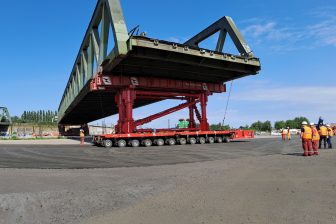Road safety: new European rules on seat belt use
Brussels, Belgium – The latest European Directive[1] on the compulsory use of seat belts has to be incorporated into law in the Member States by 9 May 2006. Under the existing European legislation it was compulsory to use seat belts in vehicles below 3.5 tonnes fitted with restraints. This obligation has now been extended to all categories of vehicles. The Directive also requires the use of restraint systems specially adapted for children.
“I am convinced that this measure will save thousands of lives. In so doing it will help to meet the target of halving the number of deaths on the roads by 2010 compared with the figure of 50 000 in 2001” said Jacques Barrot, the European Commission Vice-President with special responsibility for transport.
The European Commission recently reviewed the efforts made since 2001 to improve road safety. While considerable progress has been made, particularly in some Member States – in 2005 there were 41 000 road fatalities in Europe compared with 50 000 in 2001 – greater efforts will have to be made at all levels if the target of halving the number of deaths on the roads by 2010 is to be met.
The new European Directive is a step in the right direction. Failure to use seat belts is the second biggest cause of road deaths, after speeding and ahead of drink-driving. A study[2] carried out for the European Commission has come to the conclusion that, in the best-case scenario, actions targeting the use of seat belts would save 5 500 lives a year in the EU.
Generally speaking, the European legislation in force so far made seat belt use compulsory only in vehicles under 3.5 tonnes. In vehicles with more than nine seats and in commercial vehicles, it was not compulsory to use seat belts when sitting in the back of vehicles. The existing Directive did require the use of child restraints on seats fitted with seat belts, but it did not specify what type of restraint would be appropriate. It allowed children to travel without being properly restrained by a device suited to their size if none was available.
Research has shown that the use of child restraints can make a big contribution to reducing the severity of road accident injuries, and that a child who travels without being suitably restrained runs a higher risk of injury and a higher risk of being injured more severely than a child who is properly restrained. The common rules on the protection of children therefore needed tightening up.
The new Directive, which the Member States have to incorporate into national law by 9 May 2006, makes it compulsory to use seat belts in all categories of vehicles and on all seats fitted with them; it also provides for a series of measures to improve the safety of children travelling in cars, lorries and coaches.
For example, children less than 1.35 metres tall, or travelling in cars or lorries fitted with safety devices, must be restrained by an approved device adapted to their weight. The Member States can allow children over 1.35 metres tall to use an adult seat belt. The use of rearward-facing child restraints is now no longer allowed on the front passenger seat unless its airbag has been deactivated.
Twelve Member States[3] have informed the European Commission of their national measures for implementing Directive 2003/20/EC.
With the Commission’s agreement, the Member States can grant a number of exemptions, e.g. in order to allow certain types of occupation to be carried out effectively, in order to ensure that the police, security or emergency services can perform their duties properly, and in order to take account of the specific conditions of certain types of transport.
Six Member States[4] have asked the Commission to be allowed to grant exemptions.
See also : IP/05/612
- [2] Study by ECORYS Research and Consulting. “Impact Assessment Road Safety Action Programme, 15 April 2005 can be read at europa.eu.int/rapid/pressReleasesAction.do?reference=IP/06/583&format=HTML&aged=0&language=EN
- [3] Austria, Cyprus, Czech Republic, Estonia, Spain, Italy, Lithuania, Latvia, Malta, Poland, Portugal and Slovenia.
- [4] Belgium, Denmark, France, Sweden, Spain and the UK.
[1] Directive 2003/20/EC of the European Parliament and of the Council of 8 April 2003 amending Council Directive 91/671/EEC on the approximation of the laws of the Member States relating to the compulsory use of safety belts in vehicles of less than 3.5 tonnes. Official Journal No L 115, 9.5.2003 pages 63 – 67.
U las zojuist één van de gratis premium artikelen
Onbeperkt lezen? Profiteer nu van de introductieaanbieding voor € 10,- per maand.
Bent u al abonnee?



